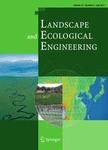版权所有:内蒙古大学图书馆 技术提供:维普资讯• 智图
内蒙古自治区呼和浩特市赛罕区大学西街235号 邮编: 010021

作者机构:Okayama Prefectural Nat Conservat Ctr Wake Okayama 7090524 Japan Okayama Univ Sci Dept Biosphere Geosphere Syst Sci Fac Informat Kita Ku Okayama 7000005 Japan
出 版 物:《LANDSCAPE AND ECOLOGICAL ENGINEERING》 (景观与生态工程)
年 卷 期:2013年第9卷第1期
页 面:131-142页
核心收录:
学科分类:1305[艺术学-设计学(可授艺术学、工学学位)] 1304[艺术学-美术学] 13[艺术学] 08[工学] 081304[工学-建筑技术科学] 0813[工学-建筑学] 0713[理学-生态学]
主 题:DCA Ecological gradient Hydrology Plant community Sod transplantation Floristic composition
摘 要:For 12 years starting from 1991, we performed vegetation surveys every 2-3 years at permanent plots located in an artificial marsh which was constructed in former rice paddies through sod transplantation from a natural marsh. Management of the artificial marsh was conducted to maintain the condition of the donor vegetation by removing unnecessary plants and ensuring a water supply of constant quality and quantity. However, the structure and floristic composition of the donor vegetation were destroyed during sod transplantation, and eutrophic water was supplied before the construction of a well in year 5. The transition of communities identified in the artificial marsh was monitored periodically at 34 fixed plots established three years after transplantation, with a further two plots added in year 7. Seasonal changes in surface water chemistry were also monitored. While the main communities of the artificial marsh resembled that of the donor marsh, two other communities were also identified at arid or muddy sites, where dominant plants had grown from seeds or propagules. After 12 years, we identified three communities (with one community containing two subunits), the dominance of which changed among the plots over the years. The communities developed along two main gradients, dry to wet and secondary succession. The first gradient was characterized by species groups favoring dry conditions, while the second gradient was characterized by species groups favoring disturbed conditions. The original composition recorded for donor marsh plants was not established by year 12 after transplantation to the artificial marsh.